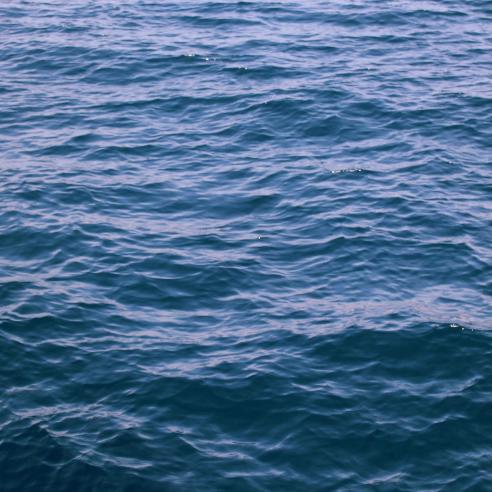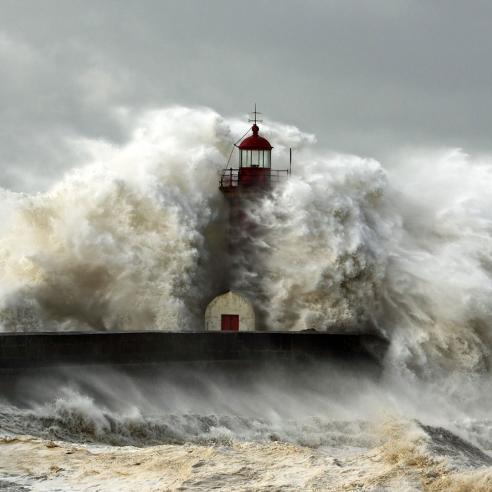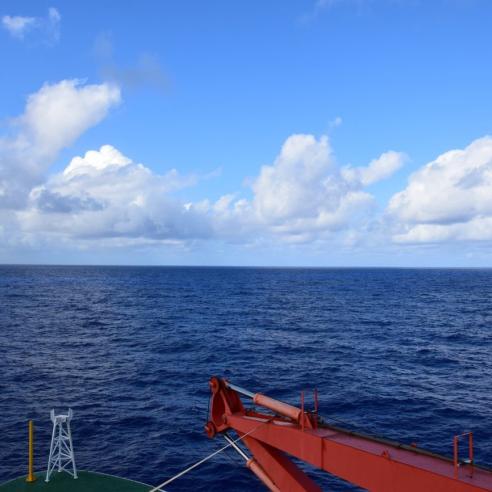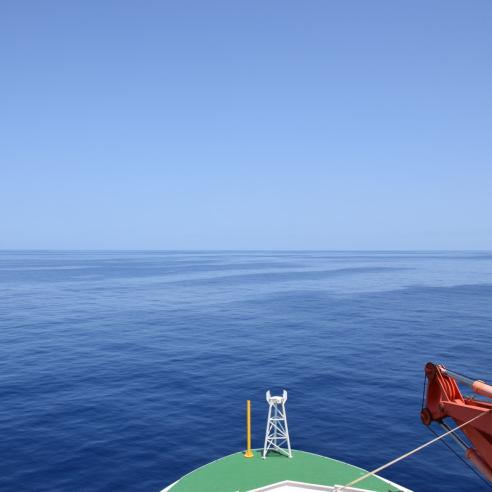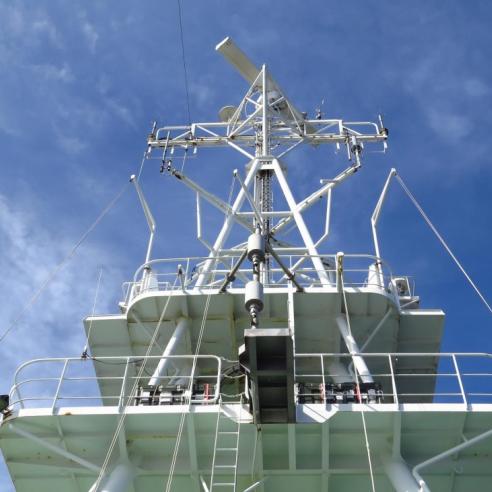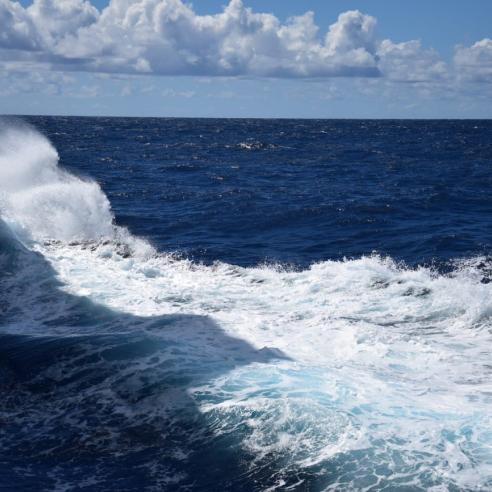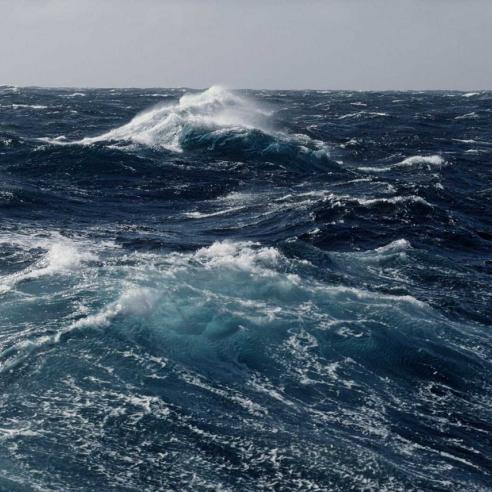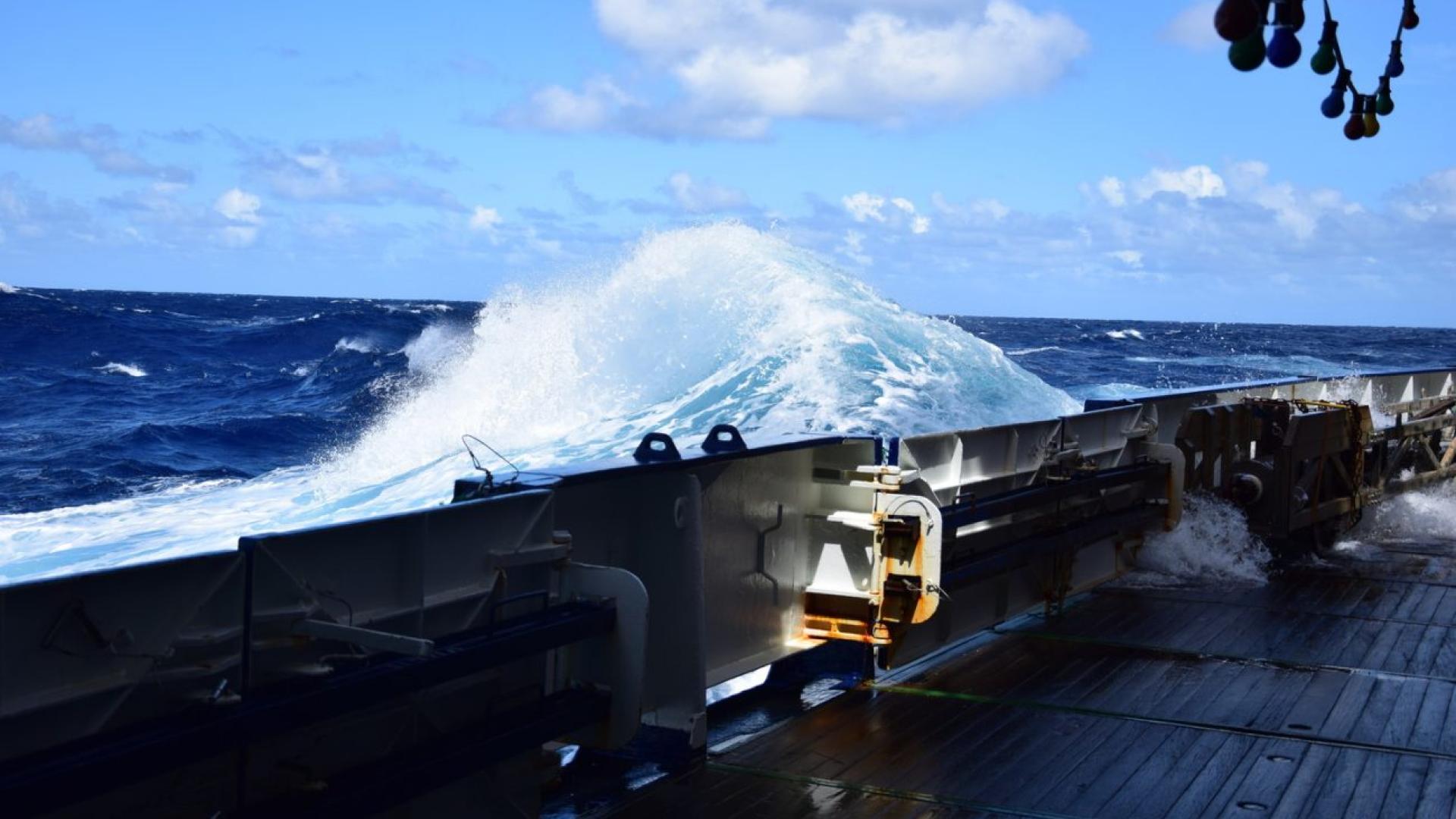
RV Polarstern, just passed the Tropic of Capricorn, 29 March 2017
Oliver talks about the Polarstern’s experience in tropical waters

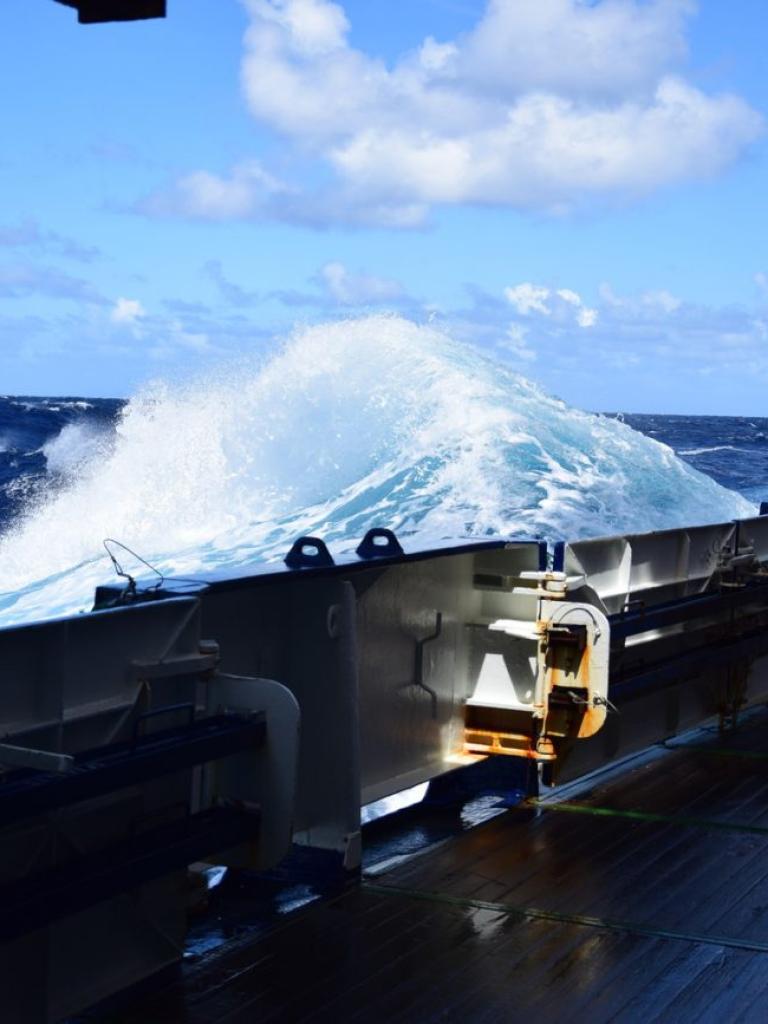
There are some things I'm still not used to on this voyage: for the first time on the Southern Hemisphere, it's still strange for me that in the morning hour our heading is towards the Sun - but that direction is not the South!
09 August 2021
30 March 2017
When the Sun always during your life has moved clockwise over the sky it is somehow irritating when the direction of movement changed to counterclockwise.
Another experience we currently have is a mismatch of temperatures and the day lengths. Other people have also told me they have experienced this on earlier visits to tropical regions.
At least in Hamburg night temperatures of 20°C and more are clearly correlated with the summer months, meaning early sunrise and late sunsets, with long twilights. If you can sit outside in a t-shirt and it has become totally dark it must be about midnight or so - here you look on the watch with the expectation it must be very late in the evening, but it's only 8 pm local time.
However, I have to come back to the last report I made where I mentioned the thunderstorm low that moved east from Brazil without harming us.
This was the short version that told only half the truth. The low was caused by a high altitude trough that has now come to rest almost perpendicular in front of our track, and without mentioning this trough it is hard to understand the weather of the last days.

Along the trough axis, a low pressure zone has established and between this and the high south of our location we experienced a steady easterly to south-easterly wind that increased from 4 Beaufort on Sunday to 6 Beaufort on Tuesday. This caused the sea to reach a significant height of about 3 metres for days, coming from abeam.
Standing on the working deck, this looks quite amazing (Image 1). But of course this is not representative, so for observation of wind, sea and swell you need to have the overview from above to identify the different wave systems - looking from above the bridge the same situation looks much less impressive (Image 2).

With the ship not only pitching but also rolling in this sea, the first people have started to feel not only uncomfortable but really sick, and on Monday afternoon the ship doctor needed to give out first medicine against sea sickness.
Working at the computer was especially hard. Personally, I am lucky enough that I can go out and around if I like, but those of us that need to stay focused on their monitor (and are not used to do so at this sea) have had problems.
I had more problems during the nights, but not with sickness. On Monday night, I woke up several times during the night when the ship made irregular movements, feeling not sick but tired on Tuesday morning. In the meantime, the relative direction of the swell has changed more aft, which made the situation much more relaxed on Wednesday.
Nevertheless we have made good progress with our work. Aside from the scientific program, we have some technicians on board to exchange the cables belonging to the shaft generators, in preparation for works to be done during the autumn shipyard time. On Tuesday, they could report that the work at the first generator had finished successfully, despite the ship movements that are, of course, less noticeable in the lowest decks.

For an external viewer they have all reason to become jealous: while they are working in a hot, narrow and extremely loud environment (see Image 3), others are lucky enough to work in the Sun all day which looks much more relaxed.
For example, the measurements of aerosol parameters and water vapor that are done by Max-Planck-Institute for Meteorology in Hamburg, in cooperation with the NASA AERONET program, must be done in straight line to the Sun which should not be covered by any cloud. So, Mark spent his time by staring at the Sun, either waiting for these clouds to vanish or executing his handheld measurements, trying to avoid a heatstroke (Image 4).

